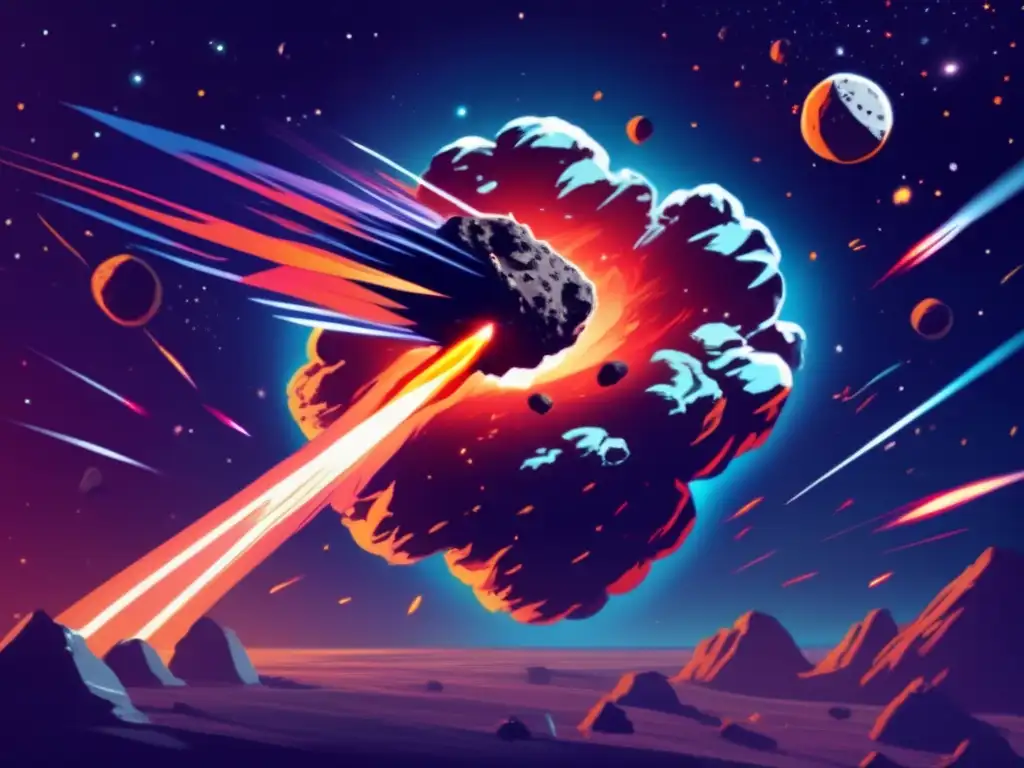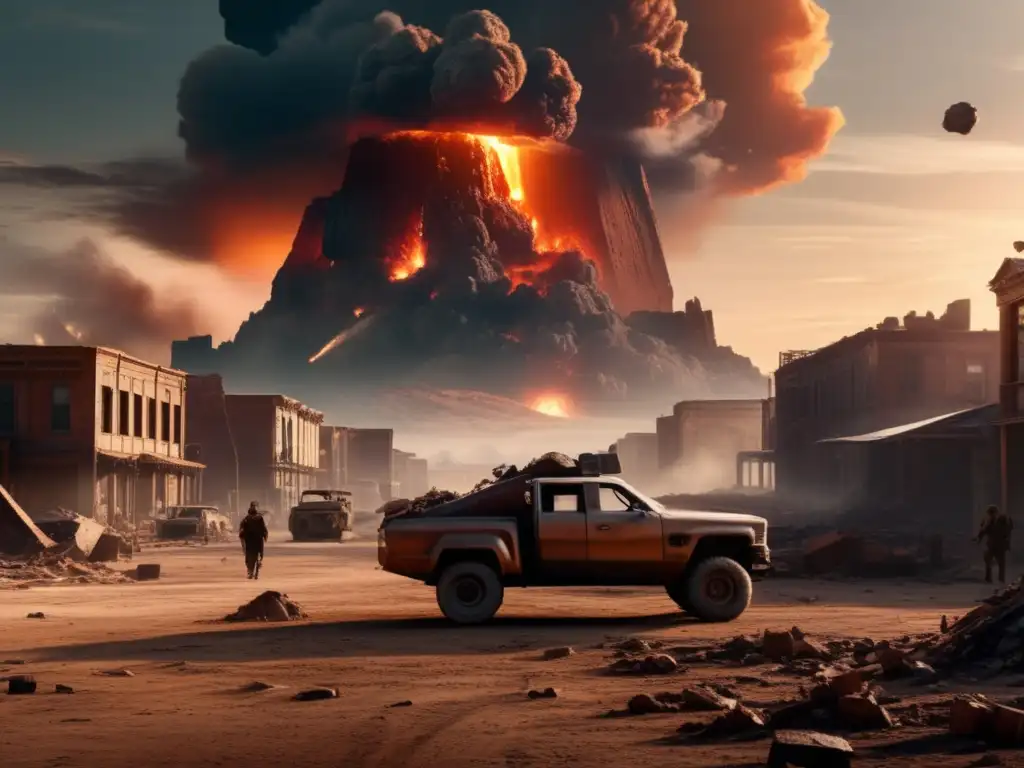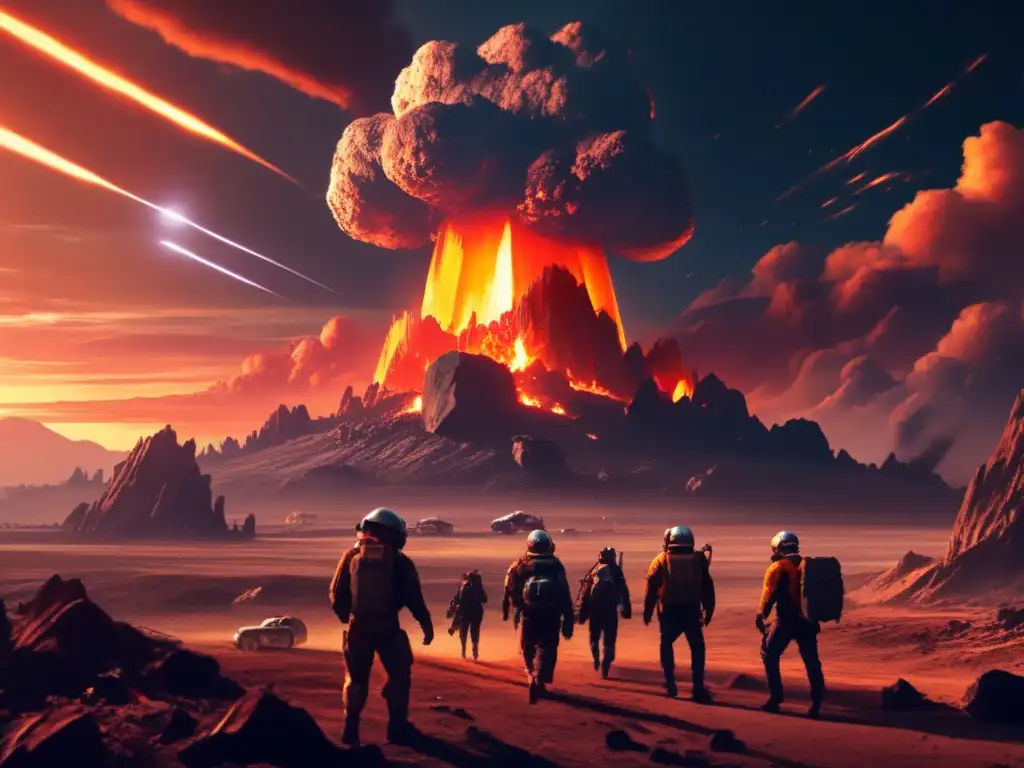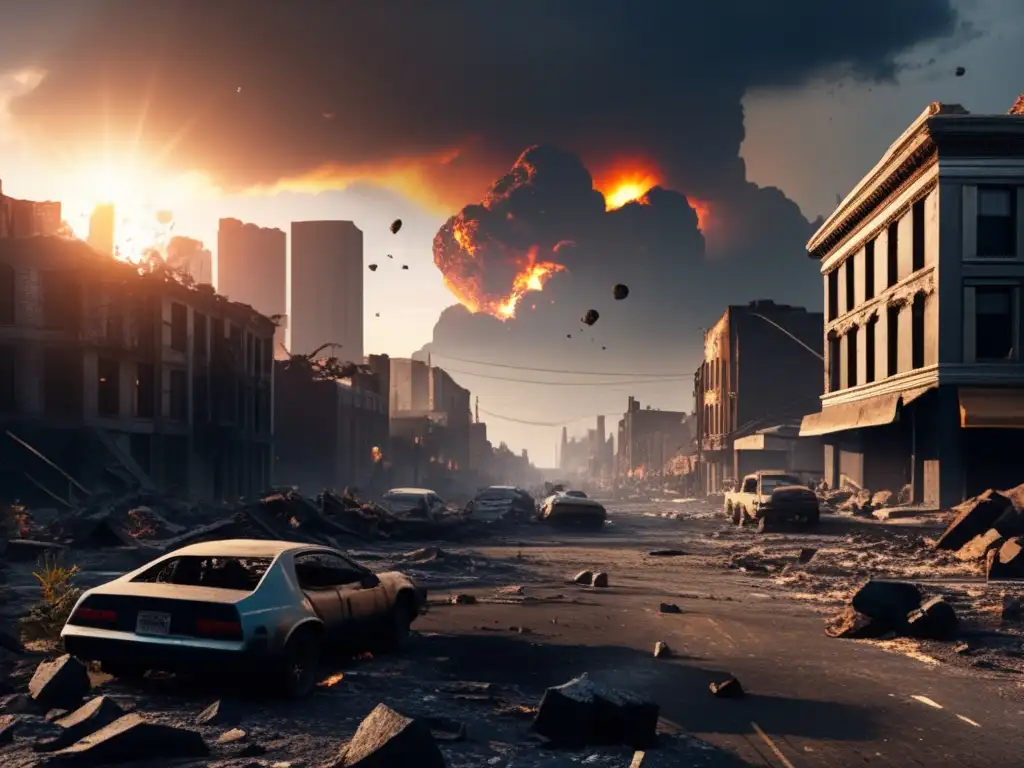Meteor Apocalypse': A Post-Apocalyptic Asteroid Film Review

Introduction
Many people have a fascination with the end of the world, whether it be through zombies, nuclear war, or natural disasters. One popular and realistic scenario is an asteroid impact. In this article, we will review the 2019 film Meteor Apocalypse, which explores the aftermath of an asteroid hitting Earth. We will also discuss the scientific accuracy of the film and its relevance to the study of asteroids.
The Film's Plot

Overview
Meteor Apocalypse follows the story of a family living in a small town that gets hit by a large asteroid. The impact causes widespread destruction and chaos, leaving the family struggling to survive. The father, a mechanic, uses his skills to build a bunker in their backyard, where they hide to wait out the worst part of the disaster. While in the bunker, they face many challenges, from rationing food and water to dealing with psychological strain and fallout effects.
Accuracy
The film depicts many realistic aspects of what could happen after an asteroid impact, such as power outages, communication breakdowns, and looting. The bunker and its construction are also accurately portrayed, including air filtration systems and reinforced walls to protect against fallout. However, the timeline of certain events is unrealistic, such as the family running out of food after only a few days, whereas it would take weeks or even months for food reserves to completely run out in a well-stocked bunker. The film also exaggerates the effects of radiation exposure and the ease with which it can be treated, which is not entirely accurate.
Impact on the Study of Asteroids
While Meteor Apocalypse is not a scientifically accurate representation of an asteroid impact, it does serve the purpose of bringing awareness to the potential dangers of asteroids and how we can prepare for them. The film's portrayal of the effects of an impact on society and the difficulties faced by survivors can encourage individuals to take an interest in the study of asteroids and how we can prevent catastrophic collisions in the future.
The Importance of Asteroid Detection

NASA's Efforts
Asteroids are a real threat to our planet, as even a small asteroid could cause significant damage upon impact. NASA has been actively tracking and studying near-Earth objects (NEOs) since the 1990s, with the goal of identifying asteroids that pose a potential threat to Earth and developing methods for deflecting or destroying them. NASA's Center for Near-Earth Object Studies (CNEOS) serves as the primary organization responsible for discovering, tracking, and characterizing NEOs.
Technology Advancements
Advancements in technology have made it easier to detect and track asteroids, such as the Large Synoptic Survey Telescope (LSST), currently under construction in Chile. The LSST will be capable of detecting up to 10 million NEOs and other astronomical objects per night, providing more comprehensive and accurate data on asteroids and their trajectories. This information is crucial in determining the likelihood and severity of an impact, allowing scientists to implement measures to prevent or minimize the consequences.
Impact on Society
While the chances of an asteroid impact may seem remote, the potential consequences are severe enough to warrant our attention and resources. By keeping ourselves informed and involved in the study of asteroids, we can contribute to the development of effective prevention and mitigation strategies, ensuring the safety and well-being of ourselves and future generations.
The Future of Asteroid Detection and Prevention

New Initiatives
NASA and other organizations are continually working on new initiatives to improve asteroid detection and prevention efforts. The Double Asteroid Redirection Test (DART) mission, scheduled for launch in 2021, will demonstrate the effectiveness of asteroid redirection by deliberately colliding with a small asteroid and altering its trajectory. The Asteroid Impact Deflection Assessment (AIDA) collaboration between NASA and the European Space Agency (ESA) aims to further the study of asteroid deflection methods and techniques.
Collaboration and Awareness
The study of asteroids and their potential impacts on Earth requires collaboration between scientists and governments on a global scale. It also requires public awareness and support to ensure adequate funding and resources for research and development. By working together and raising awareness, we can increase our chances of preventing or mitigating the effects of an asteroid impact.
The Importance of Fiction
Fictional depictions of asteroid impacts, such as Meteor Apocalypse, can serve as valuable reminders of the potential dangers of asteroids and the importance of continuing our efforts towards detection and prevention. While not always scientifically accurate, these depictions can spark interest and curiosity in individuals who may not have otherwise considered the issue, leading to increased awareness and involvement in the study of asteroids.
Frequently Asked Questions

-
What is the likelihood of an asteroid impact?
The likelihood of an asteroid impact is relatively low, but the potential consequences are severe enough to warrant attention and resources towards prevention and mitigation efforts.
-
How are asteroids tracked and detected?
Asteroids are tracked and detected by organizations such as NASA's Center for Near-Earth Object Studies (CNEOS), using a combination of ground and space-based telescopes and radar systems.
-
What are some methods for preventing or deflecting an asteroid impact?
Methods for preventing or deflecting an asteroid impact include kinetic impactors, gravity tractors, and nuclear devices, among others. The effectiveness of these methods varies depending on the size, composition, and trajectory of the asteroid.
-
How important is public awareness and involvement in the study of asteroids?
Public awareness and involvement in the study of asteroids is crucial in ensuring adequate funding and resources for research and development towards prevention and mitigation efforts. It also helps to increase overall understanding and interest in the issue among individuals and society as a whole.
-
What can individuals do to contribute to the study of asteroids?
Individuals can contribute to the study of asteroids by staying informed and educated on the subject, supporting relevant organizations and initiatives, and advocating for increased funding and resources towards prevention and mitigation efforts.
Conclusion
Meteor Apocalypse may not be the most scientifically accurate film depicting an asteroid impact, but it serves as a valuable reminder of the potential danger and consequences of such an event. By raising awareness and sparking interest and curiosity in the study of asteroids, we can work towards developing effective prevention and mitigation strategies, ensuring the safety and well-being of ourselves and future generations.
We encourage our readers to stay informed and involved in the study of asteroids, whether by subscribing to www.asteroidrealm.com, sharing articles on social networks, or any other positive form of participation. Thank you for your attention and interest in this important topic.
Additional Resources

For more information on the study of asteroids, please visit the following resources:
- NASA's Center for Near-Earth Object Studies (CNEOS)
- ESA's Hera Mission
- The Large Synoptic Survey Telescope (LSST)
 Reviewing The Asteroid Mission In 'Titan A.E.'
Reviewing The Asteroid Mission In 'Titan A.E.' Fiction Meets Science: The Asteroid Scene In 'Gravity'
Fiction Meets Science: The Asteroid Scene In 'Gravity' The Asteroid's Role In 'A Fall Of Moondust': A Book Analysis
The Asteroid's Role In 'A Fall Of Moondust': A Book AnalysisIf you want to discover more articles similar to Meteor Apocalypse': A Post-Apocalyptic Asteroid Film Review, you can visit the Asteroids in Fiction category.
Leave a Reply

Articulos relacionados: